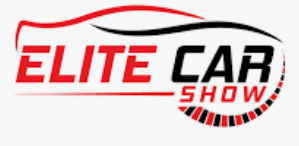If you’ve ever run an auto body shop or wished you could, The Intermediate Guide to Auto Body Shop can help you improve your processes and increase your profit. This provides step-by-step instructions, illustrated procedures, and handy checklists for all equipment and products used in auto body repair shops. It also covers the 3M process guide and other important topics. It’s for any beginner or experienced auto body technician or you may visit auto body repair Denver CO to know more.
Lean auto body
Developing and implementing lean manufacturing principles in an automotive collision repair facility is possible if the facility meets specific criteria. A “Lean” auto body shop follows an integrated design process and applies similar shop and product architectures across its plants. It also makes use of proven technologies for conveyance. These benefits help keep costs low while ensuring quality work. Some important tips to remember when implementing lean manufacturing in a body shop.
First and foremost, lean philosophy is a value-focused approach that helps reduce waste while maximizing efficiency. Lean methods have a lot to offer an auto body shop. This philosophy was initially developed by the Japanese automaker Toyota. It has been credited with reducing costs and improving quality by as much as 50 percent. Moreover, it emphasizes continuous improvement. However, it may be challenging to apply lean principles in a collision repair shop because of its technical nature.
Second, a Lean auto body shop focuses on accuracy. Accurate repair plans reduce waste. There are many types of garbage, and identifying them is the key to success. To illustrate, Tony Walker, who owns two Rod’s Custom Collision Repair Centers, has successfully instituted lean principles in his facilities. As a result, his auto body shops now boast 92 to 95 percent accuracy. One of his customers is a Mercedes-Benz owner, and he proudly boasts of having a $22,000 repair plan for his car.
3M process guides
If you’re new to the world of adhesive application, you should read The Intermediate Guide to 3M process guides for the auto body shop. It covers the basics of the processes used in a paint shop, from preparing e-coated panels to applying topcoat. It also explains the different techniques used for preparing hard-to-sand aftermarket parts. These guides also cover the best practices for repairing vehicles, including minimizing the risk of paint drifting into automotive panels.
The 3M process guides cover a variety of auto body shop procedures, including restoring plastic lenses, finishing without compounding, and final vehicle clean-up. Many methods are straightforward, but a few challenges can arise. In addition, problems like haze and fading make even simple procedures more complicated. The 3M SOPs will help you avoid these problems by showing you time-efficient and effective ways to clean and restore the vehicle.
The 3M Paint Defect Removal Hand System helps remove minor paint imperfections on a painted vehicle. It features flexible abrasives, foam and rubber pads, and sanding blocks. In addition, the 3M Perfect-It Finishing Material enables detailed finishing of small panel areas without compounding. It is also formulated to cut like a compound, handle like a polish, and remove paint without causing overspray.
Do-it-yourself auto body repair
If you are comfortable with car repairs, you may consider attempting auto body repair tasks yourself. You will encounter dents, scuffs, and scratches and probably need to repair them yourself. You can use fine sandpaper to remove shallow scratches. You will need to apply a layer of water-soaked sandpaper to the scratch area before applying a new filler coat.
Besides a basic understanding of car mechanics, DIY repair projects require specific tools and proper working conditions. Also, you may end up doing more damage to the car than good! Do-it-yourself auto body repair videos are available online and on social media. These videos can provide instructions on performing various auto body repairs, including metalworking and paint retouching. You can also learn a lot by watching these DIY videos to understand better what you need to do.
You can use a Bondo(r) body filler kit for fiberglass repairs. These kits contain a resin and a hardener that cures in two hours. They can even be used with protective car films. Once fixed, the Bondo filler will be compatible with most paints. Of course, if you are not a professional, you can always try this DIY auto body repair project to save money.
